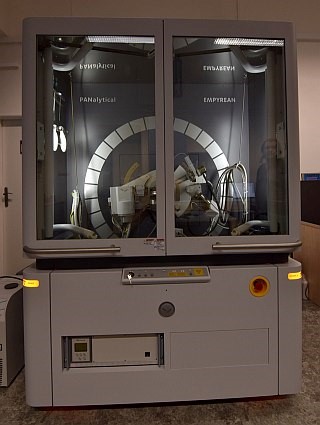
Typical applications
X-ray diffraction on polycrystalline powder and bulk samples, measurements of polycrystalline thin layers and epitaxial coatings, reciprocal space mapping, reflectivity measurements, single crystal measurements using Cu and Mo radiation, between 80 - 500 K. Total scattering method - pair distribution function measurements using the Ag radiation. Non-ambient x-ray diffraction, study of chemical reactions using the XRK 900 reactor chamber, up to 900°C, and reaction atmosphere up to 10 bar. In situ deformation (tensile and compression) x-ray diffraction studies of polycrystalline and single crystal samples.
Available methods
- x-ray diffraction measurements on polycrystalline powder and bulk samples
- diffraction studies of polycrystalline thin films and epitaxial layers
- reflectivity measurements
- reciprocal space mapping
- pair distribution function measurements
- capillary samples measurements
- low temperature x-ray diffraction
- in-situ deformation XRD measurements
- in-situ XRD reaction studies
Technical specification
- Θ-Θ vertical goniometer
- sealed tube sources:
- Cu, Mo, Ag
- Cu and Mo radiation:
- Bragg-Brentano geometry
- Bragg-Brentano HD optics (plane mirror)
- low resolution parallel beam optics (parabolic multilayered mirror)
- high resolution setup (hybrid monochromator: parabolic mirror + Ge 220 two bounce monochromator in incidence beam, three bounce Ge 220 analyzer in diffracted beam)
- Ag radiation:
- focusing mirror, PDF analysis
- detectors:
- 0D scintillation and proporcional counters
- 2D detector GaliPIX (hybrid pixel, single photon counting technology)
- CdTe chip, efficiency 98% for all three wavelengths
- Eulerian cradle
- capillary spiner
- reactor chamber
- XRK 900 (Anton Paar); 900°C, 10 bar
- Cryostream 800 cooler (Oxford Cryosystems)
- 80 – 500 K
- XRF detector
- deformation stage

